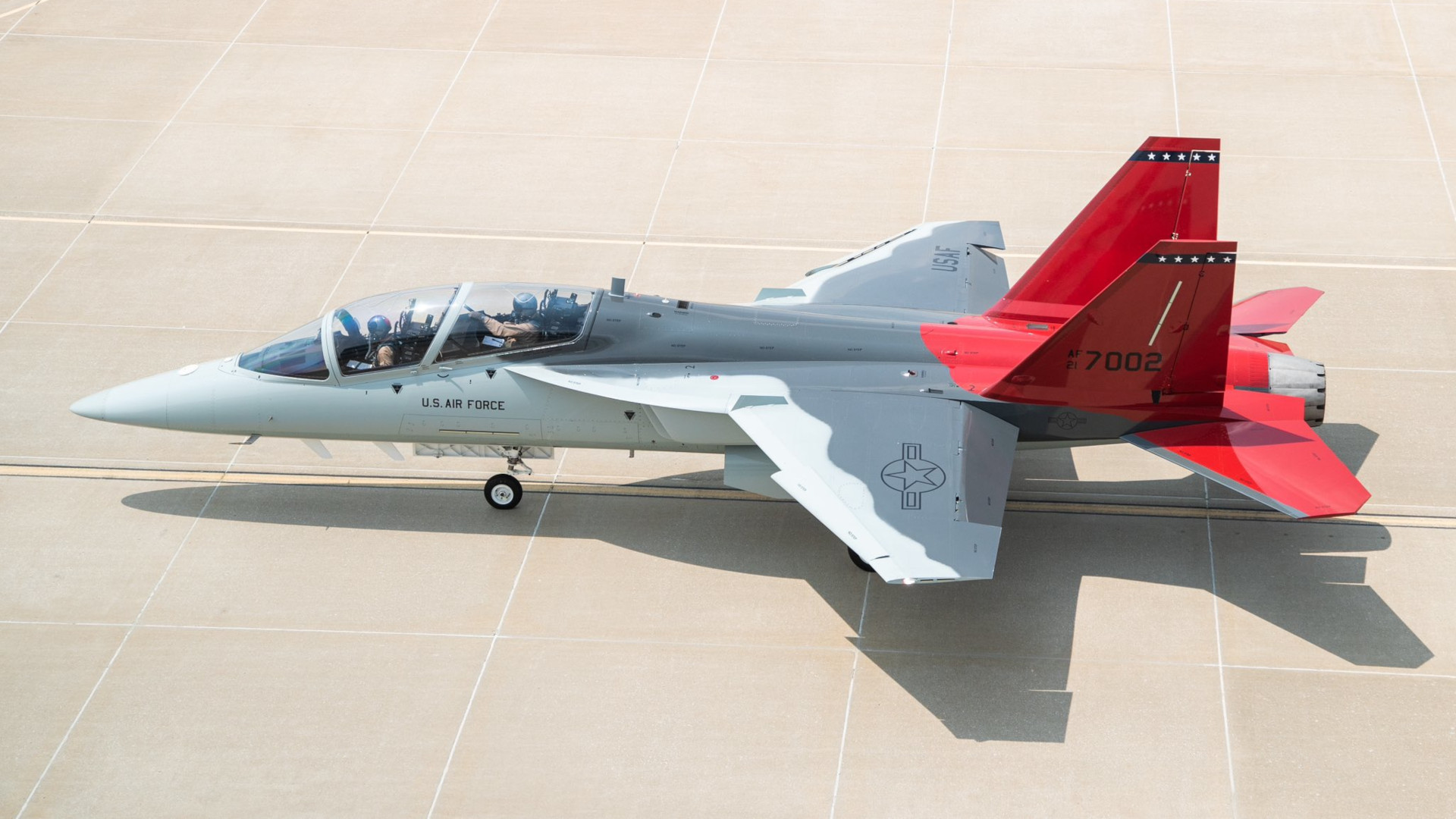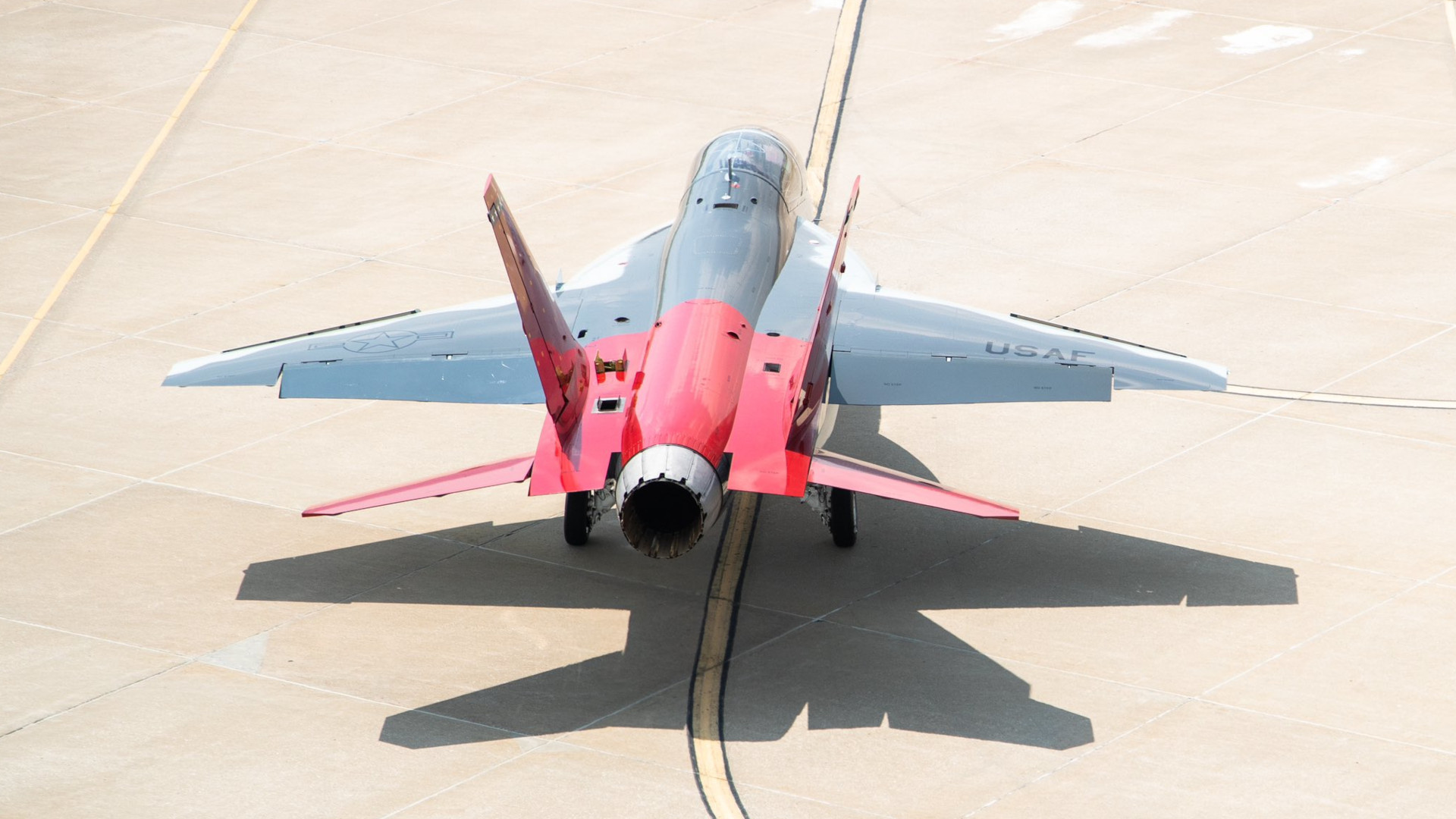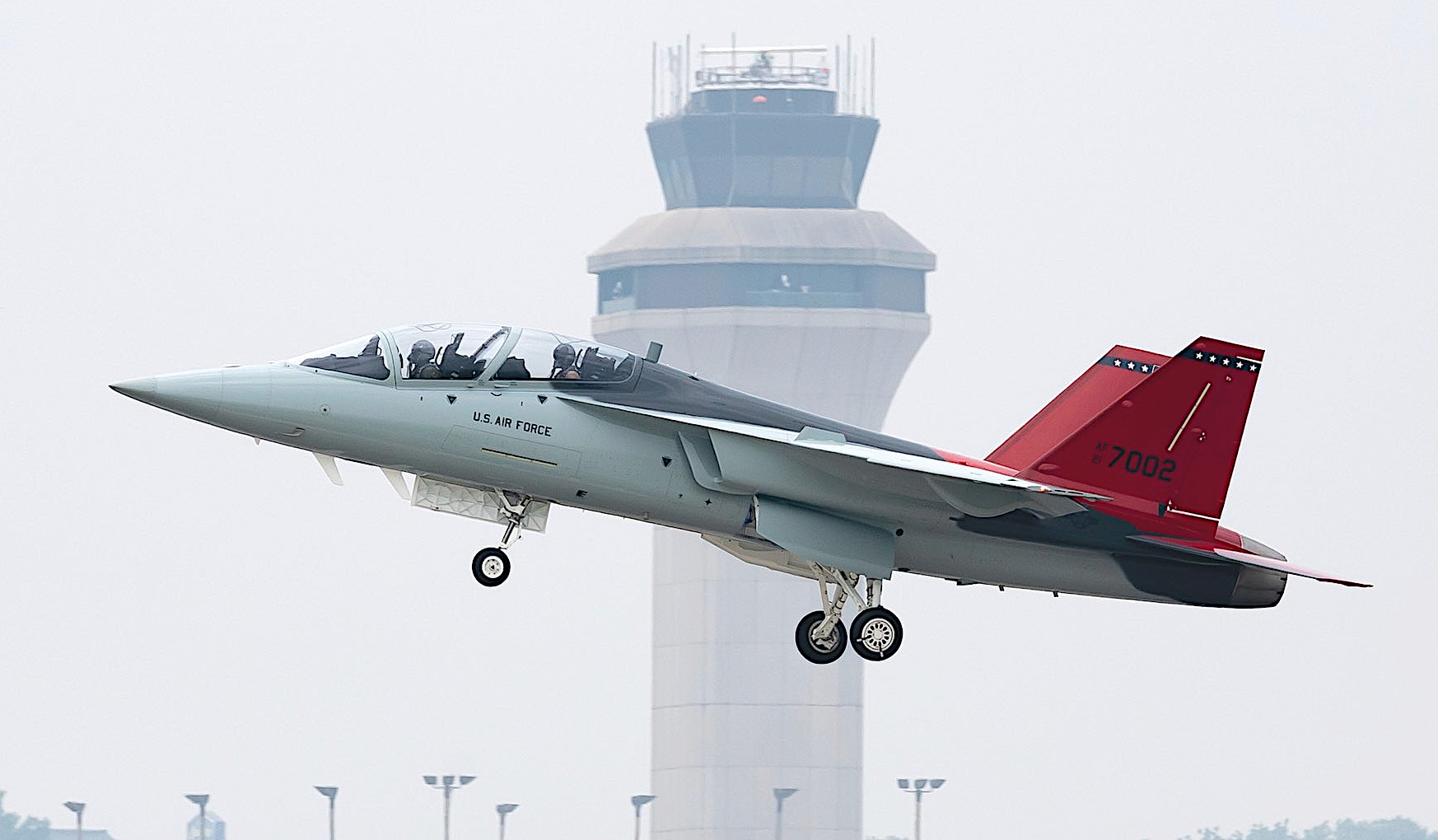The first T-7A, part of an initial lot of pre-production engineering and manufacturing development (EMD) aircraft to be used for testing and design validation purposes, has taken to the skies for the first time. If everything comes to fruition, the jets in this lot will pave the way for full-up production aircraft. This follow’s the company’s announcement last week that one of these T-7As had completed taxi tests on the ground in preparation for this milestone.

Boeing and the Air Force have both confirmed the T-7A’s first flight had taken place earlier in a Tweet this afternoon. The plan, as it has been previously reported, will see the jet eventually head to Edwards Air Force Base in California for further testing. The War Zone has also reached out to Boeing for more information.
The prototype T-7A, which carries the U.S. Air Force serial number 21-7002 and was the same one used for the taxi testing, carried out the first flight from St. Louis Lambert International Airport in St. Louis, Missouri earlier today. The Red Hawk is slated to eventually replace the Air Force’s aging T-38 Talon jet trainers, which are becoming increasingly more difficult to operate and maintain.

Boeing had alluded to the impending first flight yesterday with a video that highlighted Maj. Bryce Turner as one of the two individuals expected to take the T-7A to the skies for the first time. Turner, who is a member of the 416th Flight Test Squadron, a third-generation Air Force pilot, and an African American, said in that clip, seen below, that “its not just any other test for me.” The Red Hawk name and the jet’s current paint scheme are direct references to the Tuskegee Airmen of World War II fame, who served in the U.S. military’s first African American flying squadron, which was eventually equipped P-51 Mustangs with red-painted tails.
The jet’s route, which took it south for some maneuvers over the Mark Twain National Forest, was also visible on online flight tracking sites.
The first flight is an important step forward in the T-7A’s development process and reaching this stage is perhaps particularly important given how behind schedule the Red Hawk is currently. In 2018, the Air Force chose what is now known as the T-7A, a design Boeing crafted in cooperation with Swedish planemaker Saab, as the winner of its T-X trainer competition. Since 2016, Boeing has been doing actual flight testing in support of this program, but using demonstrator aircraft, seen in the video below, that are not fully production repetitive.

In the past, the Air Force said it had hoped to begin taking delivery of the first five T-7A EMD prototypes this year and begin actually fielding the new jet trainers next year. However, the service has now pushed back the EMD prototype delivery timetable to at least December 2025 and now expects the Red Hawks to start entering service no earlier than 2027.
A number of factors have caused these delays, with the biggest at present being issues with the T-7A’s ACES 5 ejection seats and other elements of the aircraft’s complete emergency egress system. It has now been determined that the original configuration presents serious enough safety issues for pilots with certain body types, especially smaller and lighter female pilots, to require significant and costly redesign work.

In May, the Government Accountability Office (GAO), a U.S. Congressional watchdog, issues a report that also called attention to concerns that Red Hawk’s flight control software remains worryingly immature, that work on associated simulators has also been delayed, and that information about the jet’s sustainment requirements remains limited.
Boeing has said in the past that it had resolved an issue involving wing-rock at high angles of attack, in part through the use of digital engineering processes. The T-7A has long been held out as a poster child for the benefits of digital engineering and design tools, but has increasingly come to reflect a growing consensus that those technologies are unlikely to ever be as revolutionary as many had hoped.
Secretary of the Air Force Frank Kendall said in May that he felt that digital engineering, broadly, had been overhyped. “Digital engineering isn’t magic,” Dr. Will Roper, the former assistant secretary of the Air Force for Acquisition, Technology, and Logistics, one of digital engineering’s biggest proponents, told The War Zone in a separate interview earlier this year.
You can read more about digital engineering and the pitfalls that have emerged here.

Boeing, which is under a fixed-price contract for the T-7A, has incurred $1.1 billion in losses over the delays to date.
In the meantime, delays with the T-7A already look to be exacerbating the Air Force’s long-standing pilot shortage, though the service has downplayed this. What is undeniable is that this means the T-38s, and their equally aging J85 engines, will have to remain in service longer than expected. The Talon community has seen a notable uptick in maintenance issues and major mishaps, including a number of fatal accidents, in recent years.
Much remains to be seen about the continuing development of the T-7A and when it will actually enter service. Boeing has now taken the important step of actually flying one of these jets for the first time.
UPDATE 4:05 P.M. EST:
Boeing has now issued a full press release about the T-7A’s first flight, which it says lasted approximately one hour and three minutes. The company has confirmed that Air Force Maj. Bryce Turner and the company’s T-7 chief test pilot Steve Schmidt were onboard the aircraft at the time.
The flight “validated key aspects of the aircraft and demonstrated the power and agility of the Air Force’s first advanced trainer to be digitally designed, built and tested,” according to Boeing. It marks “the start of the engineering and manufacturing development (EMD) phase of the [T-7A] program.”
“The stable performance of the aircraft and its advanced cockpit and systems are game changers for U.S. Air Force student pilots and instructors alike,” Maj. Turner said in a statement. “We’ve come a long way in training since my family role models flew.”
“This first flight with the Air Force represents our team’s commitment to delivering a new level of safety and training for fighter and bomber pilots,” Evelyn Moore, vice president and program manager for Boeing T-7 Programs also said. “We remain focused on engineering ways to better prepare warfighters for changing mission demands and emerging threats.”
“This is an exciting time for the entire team,” Air Force Col. Kirt Cassell, the service’s T-7A Red Hawk program manager, added. “The Red Hawk’s digital design integrating advanced training capabilities will drastically improve pilot training for the next generation of fighter and bomber pilots.”
Boeing’s press release also touts the digital design aspects of the T-7A program, asserting that this enabled it to move from a “firm concept” to an actual flight test in 36 months. “A combination of model-based engineering, 3D design and advanced manufacturing increased first-time quality by 75% and reduced assembly hours by 80%,” according to the company.
Contact the author: joe@thedrive.com
